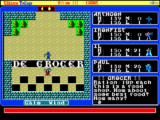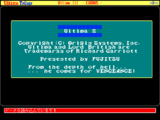Computer ports of Ultima III
Ultima III was developed for the Apple II and therefore, all ports are based on that version. These ports include the IBM PC, various Commodore, Atari, Macintosh and Japanese computers.
Additionally, there have been some fan-remakes that are not covered here.
The Original Ports (1983)[edit]
The Apple II Original[edit]
The original game, upon which all other ports are based.
The game's graphics are similar to the graphics of the two previous games, although there are now blue borders around the different screen areas and the Apple's hardware mixed mode (the screen divided into a graphical portion and text portion) is no longer used; instead, text is written into the graphical bit map, which allows free placement of text and reduces the color fringing issue. There are some issues with the color: the limited palette is noticeable in that many things are in monochrome and some colors are off, like purple brick floor and strangely colored mountains. This is also the first Ultima game with music. The music requires a sound card (Mockingboard or compatible), as Apple's hardware does not allow playing music through the internal speaker while simultaneously doing other things, such as animating the screen.
The game also has several glitches which, at worst, can make further advancement impossible.
The game was sold on a single, double-sided 5.25" floppy disk.
There are at least two versions. One version has no concept of move numbers, which the PC-port does. Another version does keep track of moves, but the move counter only ticks while you are on the mainland of Sosaria.
Apple II – Lord British
Apple II – Map of Sosaria
The Atari 8-bit-Port[edit]
The port for the Atari 8-bit (made by Chuckles) is essentially the same game as the original on the Apple II. It utilized the Atari high resolution 320x192 graphics mode with artifacting to provide color, which means that like most Atari 8-bit Ultimas, it will display in black-and-white on European (PAL) Ataris which do not offer artifact color. As with Ultima II, the colors would appear different depending on the Atari 8-bit computer used. The screenshots show how the color was supposed to look. The movement and attack sounds are presented through the built-in speaker (or its emulation channel on XL/XE machines) rather than through the sound chip, and they sound like the Apple II version. Fortunately, Origin still took advantage of the excellent sound capabilities on the Atari and provided the full musical score.
It was sold on a 5.25" floppy disk.
The Commodore 64-Port[edit]
Of the ports made in 1983, the C64-port, made by Chuckles, is perhaps the most advanced.
The game actually made use of the C64's 320x200 "monochrome" mode, that allowed the foreground and background color to be independently defined for each 8x8 pixel block (one character of text). The game is more colorful compared to the Apple II original, although the graphics otherwise look very similar. The colors used on the C64 are more logical (for example, the brick floors are red instead of purple, and mountains are brown). However, the 3D dungeons, which were shown in color on the Apple, were simple black-and-white ones on the C64. Also, the game is noticeably slower than on the Apple, since the graphics code of this port is actually that of the Apple original, running through an interpreter to convert the result to a format the C64 can understand in real-time.
The first Ultima with music, Exodus took full advantage of the C64 music processor, the SID chip. This port contains the full musical score, with no need for additional hardware such as the Mockingboard sound card on the Apple. The music does sound nicer than on the Apple, since the SID chip is more capable of producing complex harmonies than the General Instruments AY-3-8910 chip used on the Mockingboard.
The game was released on a single, double sided 5.25" floppy disk. Note that the game has no built-in fastloader, since these programs only came into being in late 1984 on the C64, meaning that the loading times are rather long.
In 2007, a crack of the Ultima III-port for the C64 known as Ultima III Gold was released at Big Floppy People by MagerValp. This crack, which uses built-in data compression to fit on a single floppy side, included numerous bug fixes and improvements, and can be found at CSDb and here.
The IBM PC-Port[edit]
The IBM PC-port, made by James Van Artsdalen, was the port with the lowest audiovisual quality at its release. As the PC of 1983 was perceived as a machine for the workplace, games were slow to appear on the platform, and were often less advanced, in audiovisual terms, than their equivalents on other contemporary systems.
As was the case with Ultima II, the graphics are displayed in four-color CGA (black, light gray, magenta and cyan), which was the only form of (comparatively) high resolution graphics available for the PC at the time. However, if the game is played on a composite CGA monitor or TV set, the use of artifacting and dithering makes it appear much more colorful; in fact, under these conditions it looks quite similar to the Apple II version. The advent of the EGA standard bypassed this feature of CGA entirely, meaning older games like Ultima III would be doomed to a drab four-color existence henceforth.
The game also has no music and only basic PC speaker sound effects. PC sound cards as we think of them today only came along in 1988, with the advent of the original AdLib music card. Also, the game has no frame limiter (a common shortfall of early PC games), making it virtually unplayable on a modern system without an external slowdown utility.
Note that the fan-made Ultima III Upgrade Patch addresses most of these issues: the game gets updated 16-color EGA graphics, a frame limiter is added, and the music of the Apple- and Commodore-ports is restored in MIDI quality. A more recent update to the patch includes the option of 256-color VGA graphics as well as a simulation of how the CGA mode would have appeared on a composite screen.
The game retailed on a single 5.25" floppy disk.
One difference from the Apple II-port is that the Dag Acron, the wizard's teleport spell, works while on a boat, teleporting to another water location. This can include teleporting to the water in front of the Castle of Fire, therefore allowing to cheat: a player can skip the quest to acquire the Mark of the Snake completely.
IBM PC – CGA composite mode
The Macintosh-Port[edit]
This port from 1985 looks similar to the port done for the previous game, which is no coincidence, since James Van Artsdalen wrote both of them in the same year.
This version again takes advantage of the Macintosh interface, and thus provides mouse support and has the presence of status windows. Due to the higher resolution of 512x342, all the player information is visible all the time. This version does away with all keyboard commands – everything is done with the mouse. The Macintosh-port was created from original code and possesses none of the original. The graphics in this port are monochrome, unlike the enhanced colors of the original, which was a deficiency of the Macintosh at the time. The game does take advantage of the Macintosh computer's high resolution mode, which however did not result in the player seeing more surroundings due to the various status windows.
Interestingly, the way the screen is divided is totally different from the original, with the party status on top, and the moongate indicator at the right side with much bigger moon icons as well, where the original only had numbers. Unlike the previous game, this time the title screen is very much like the original, showing the demise of a party at the breath of a dragon. The game has sound effects only – no music at all.
The game however did suffer from a highly aggressive copy protection on the disk. Which made copying and archiving very difficult for a long time. It was even warned in the manual not to copy the disk, or risk damage to the disk drive. Due to these factors, this port is almost entirely forgotten and replaced in collective memory by the shareware port from 1995.
The port was released on a single 3.5" floppy disk.
Macintosh – On the Isle of Fire
[edit]
Solo Macintosh developer LairWare released a shareware version of Ultima III for Macintosh in 1995 featuring synthesized speech for NPCs, digitized sounds, an original soundtrack, and 32-bit color graphics. This port uses the original keyboard-driven interface instead of the 1985 Mac port's point-and-click interface. The 1995 LairWare port shares no common code or assets with the the original Mac port; instead developer Leon McNeill ported Ultima III by decompiling the code of the Apple II version and recreating it in C on the Mac.
The 16-Bit-Ports of 1986[edit]
The Amiga- and Atari ST-Ports[edit]
These two ports were created by "Banjo" Bob Hardy in 1986 and are essentially identical twins, with the only real difference being sound. They are both the most technically advanced on the ports made by Origin.
It is noticeable that three years had passed since the original game, as the graphics are much better and more colorful, as expected of a 16-bit-port. However, as seen on the title screen and things like the borders, the color sometimes goes overboard and does not confirm to the originally intended color scheme as seen on the Apple II. Note that the Atari ST-port could also run in the Atari's high resolution monochrome mode. While it obviously lacks all color, the detail level is much improved.
The ports also have mouse support, making the game much easier to control and play. Both ports have the fully musical score of the original, which of course also sounds much better, since both computers have superior sound chips. Due to better hardware, the music does sound better on the Amiga, even though the fully musical capabilities of the machine are not used.
Both of the ports, Amiga and Atari ST, were retailed each on a single 3.5" floppy disk, eliminating any kind of disk swapping.
The Japanese Ports (1985-1990)[edit]
The MSX-Port[edit]
Released after the NES-port of Ultima III, this port, which was built from the Newtopia Planning version, was only released in Japan on a cartridge in the year 1988 and looks and sounds exactly like it. Therefore, all that applies to the NES-port also applies to this one. However, some of the graphics were redrawn, and the music was downgraded to play on the MSX PSG.
The PonyCanyon MSX2-port that was released in 1989 is instead a port of the 88/98 games and was released on disk.
MSX – Meeting Lord British
The PC-8801-Port[edit]
In 1985, StarCraft released an English-only version of Ultima III, created by Thinking Rabbit for the PC-8801 computer in Japan. The gameplay is identical to the original Apple II release's, though the presentation is a bit different compared to the original.
The other version was created four years after the PC-8801 by StarCraft, and that on was also included with the Japanese Ultima Collection by PonyCanyon in 1989. Compared to the first version, graphics and sound are vastly improved. It does share the code with the PC-98 version, only that that one looks better, due to the PC-98 being a superior computer.
PC-8801 (PonyCanyon) – Castle British
The PC-9801-Port[edit]
This port was created in 1989 by PonyCanyon and also included in the Ultima Collection. This port is very much like the port for the PC-88, which is expected since they share instruction sets. However, due to the fact that the PC-98 is a more powerful machine, it does show the graphics in their full resolution, hinting that this was the system for which the port was originally designed, before being downported to the other system.
An earlier port by StarCraft in 1986 does exist, but it is the same as the PC-88 port of theirs, with no difference at all.
The FM-7-Port[edit]
In 1986, StarCraft also released Ultima III for the Fujitsu FM-7 series of computers, created again by Thinking Rabbit. Just like the other StarCraft versions it is straight port of the Apple II, down to many details and similar in the presentation to the other StarCraft ports.
This port however differs in one aspect from the other StarCraft ports, in that it in the main game uses a resolution of 640x200. In order to use this unusual resolution, everything is shown interlaced, which on the monitors of the time resulted in a rather dark picture. The game was sold on two 5.25" floppy disks or two 3.5" floppy disks.
The FM Towns-Port[edit]
This port of Ultima III was made as part of the FM Towns Ultima Trilogy I II III compilation, and released by Fujitsu in 1990. As such it offers redrawn graphics with a new tile set that was also used for the FM Towns version of Ultima I and Ultima II. This port was only released as part of the compilation, and only in Japan.
In addition it also offers newly composed music, which replaces the original compositions from Kenneth Arnold. As with the graphics, these music pieces were also used for the other two titles of the compilation.
Like most FM Town-ports, it also offers a high resolution introduction that the player can watch outside the game. Unlike the game however, the introduction has no English translation and can only be watched in Japanese.
The complete epilogue from this system is also available.
See Also[edit]
External Links[edit]
- Ultima III - FM Towns Intro (YouTube)
- Ultima III: Exodus (Apple II) (YouTube)
- Ultima III: Exodus Intro (Commodore 64) (YouTube)
- Ultima 3 (PC) (YouTube)
| Computer Ports | |
|---|---|
| Games | Ultima I ☥ Ultima II ☥ Ultima III ☥ Ultima IV ☥ Ultima V ☥ Ultima VI ☥ Savage Empire |
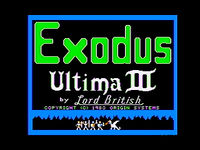
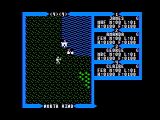
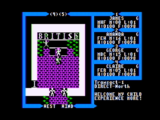
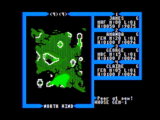
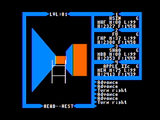
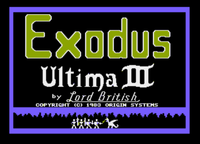
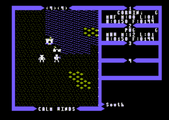
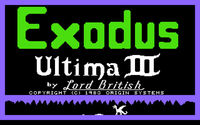
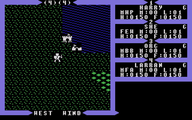
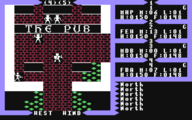
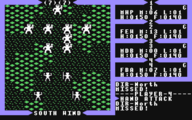
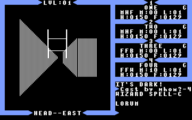
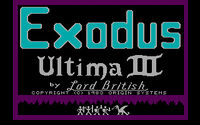
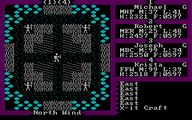
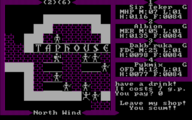
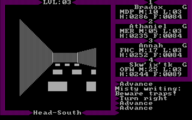
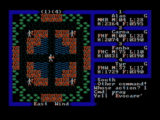
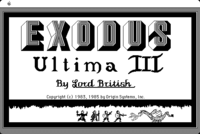
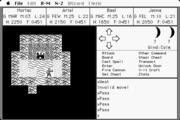
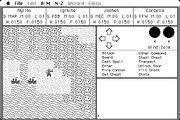
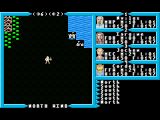
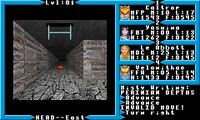
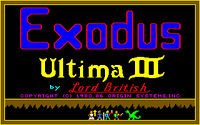
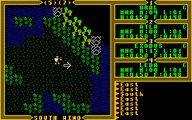
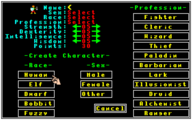
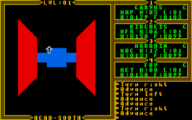
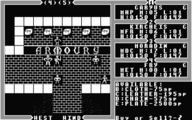
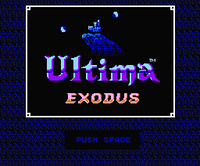
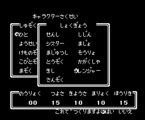
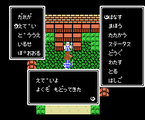
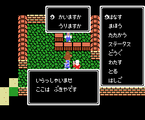
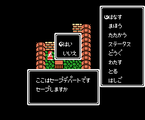
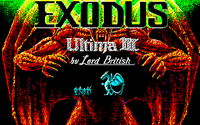
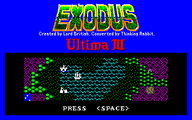
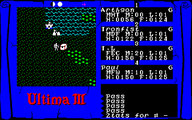
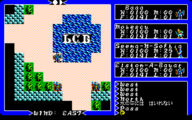
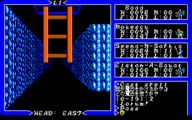
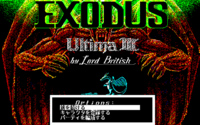
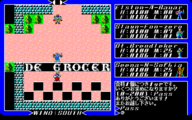
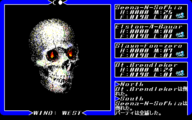

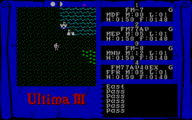
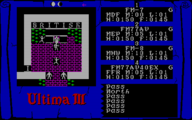
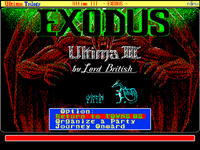
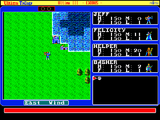
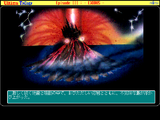
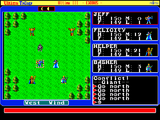
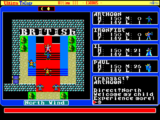
![FM Towns – Entering Britian [sic]](/images/thumb/d/d3/TownFM-TownsU3.png/160px-TownFM-TownsU3.png)
